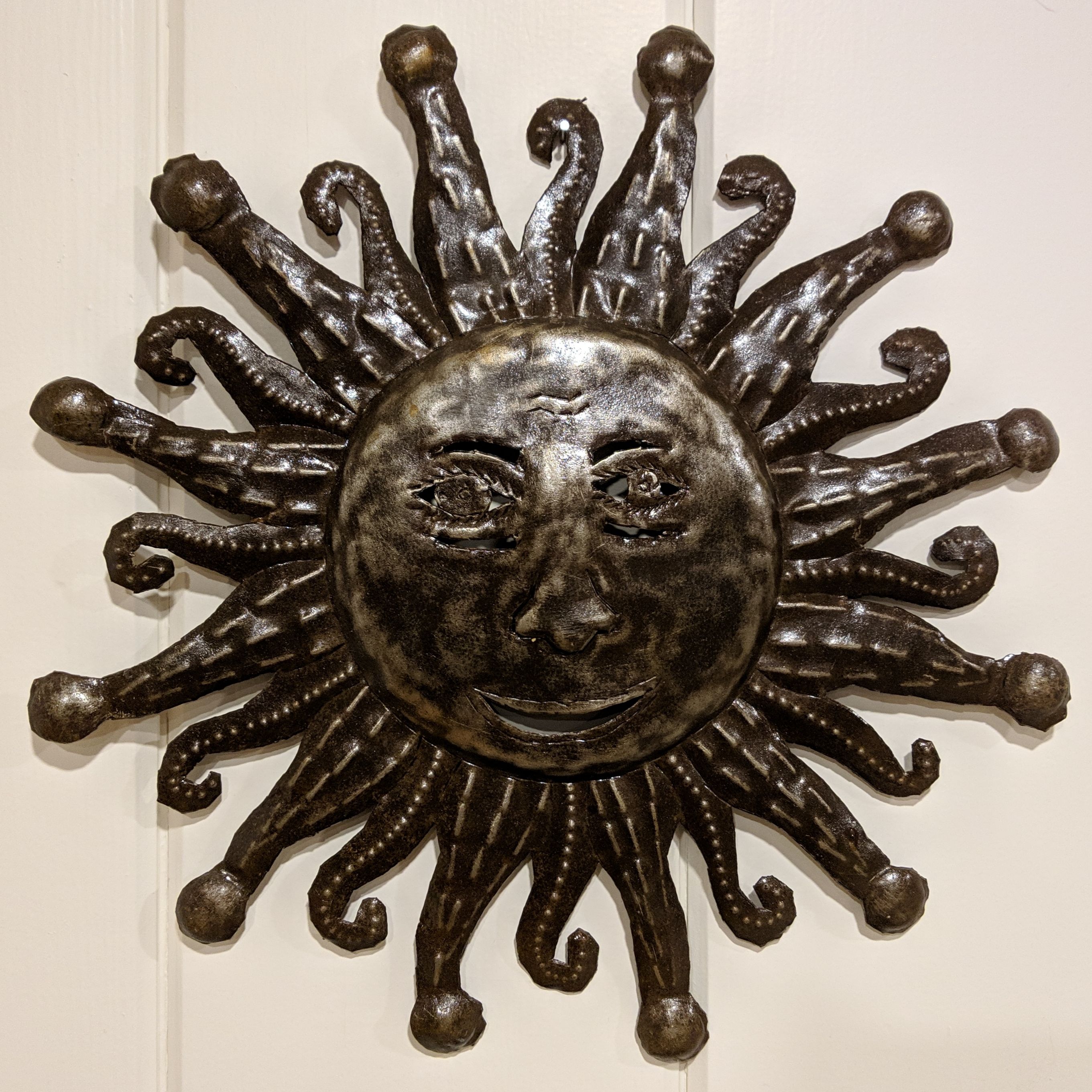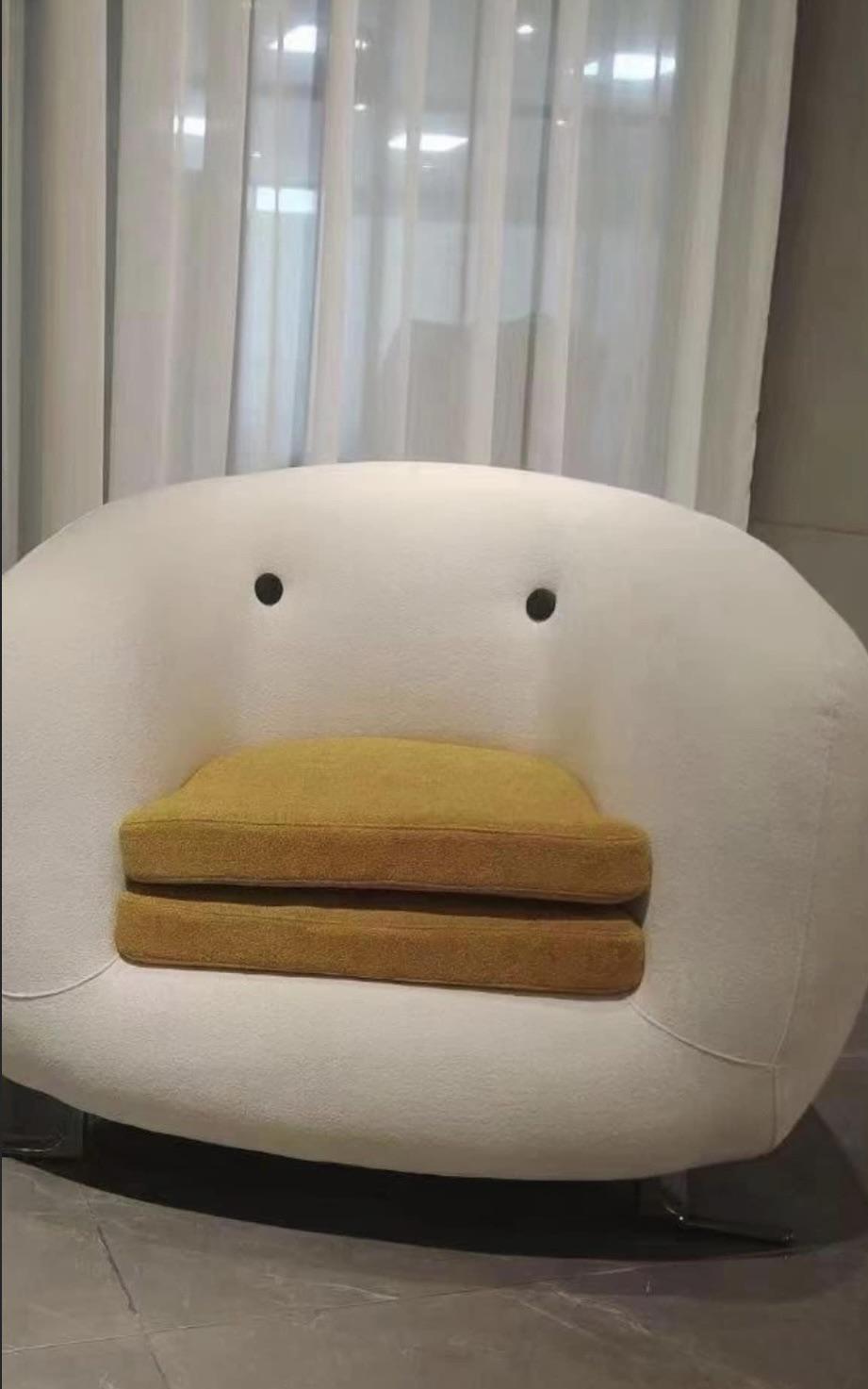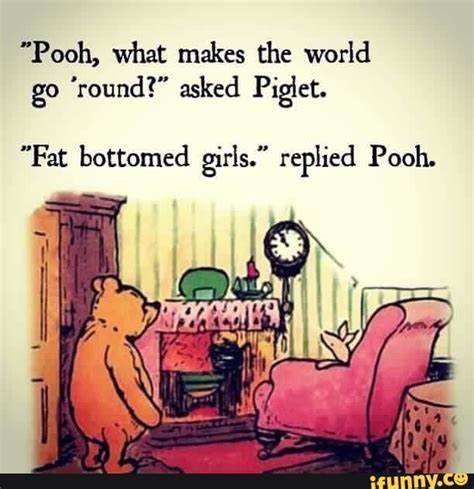Heat pumps can’t take the cold? Nordics debunk the myth::By installing a heat pump in his house in the hills of Oslo, Oyvind Solstad killed three birds with one stone, improving his comfort, finances and climate footprint.
It never ceases to amaze me how people don’t read past the title 🤦 There are people debating about -10 to -30C when the article clearly states that it works in those temperatures. Not only does it work, it’s twice as efficient as electrical heating at those temperatures.
I think it does, and it seems to work because of a defrosting feature that earlier models didn’t have. But I wouldn’t say it does so very clearly. Unless I missed it.
deleted by creator
Electric heat is not always 99.9% efficient, resistive heating is.
Heat pumps are more than 100% efficient(compared to resistive heating)
It’s not bs, because we are moving heat, not creating it. You thinking it is bullshit will not change the laws of thermodynamics. Try to think about it this way.
“Cold” is a made up human concept, it really is a lack of heat energy. The coldest is 0K, but even a Midwest winter is waaaaaay above that. Heat pumps (and all refrigerant-based systems) work by changing the phase of the refrigerant from liquid to gas to cool, or by compressing a gas to a liquid. This phase change takes energy from the surrounding air (think about computer duster, the can gets cold) and then pipes it inside, where it can be compressed to release the heat it just picked up from outside. In the summer you flip the reverse switch to cool your house.
Here is an explanation from someone much more eloquent than myself:https://youtu.be/7J52mDjZzto?si=sYlNlpvGnJs16lwk
Here is an alternative Piped link(s):
https://piped.video/7J52mDjZzto?si=sYlNlpvGnJs16lwk
Piped is a privacy-respecting open-source alternative frontend to YouTube.
I’m open-source; check me out at GitHub.
I just don’t buy this twice as efficient bullshit.
Do you understand how heat pumps work? The heat you’re drawing on is the the heat of the outside compartment on the outside, therefore the heat moved to the inside can be more than just the heat equivalent of the electric energy you put in. That’s how these achieve more than 100% efficiency, in general. In fact if the outside isn’t so cold outside they can achieve 300%-500%.
Now the trick to moving heat from a cold outside compartment to a warmer inside compartment lies in the compression. If you draw even a moderate amount of heat energy into your medium, then compress it, it will turn quite hot allowing you to dump heat into your warm inside compartment. Then as the medium flows out you let it expand and it turns really cold, cold enough that it can draw in heat from the cold outside. But the lower the difference in temperature of the outside air to your expanded medium gets the less heat you can transport per unit of time, that’s why we’re only looking at 200% here.
You also have the waste heat being converted into useful heat, which only helps the efficiency. A standard resistive heater is almost all waste heat, so if you can use some of that energy to get more heat from elsewhere, that’s how you can get 100%+ heat efficiency.
So you’d rather trust your feelings? Just loon into it if you’re that skeptical.
Arrogantly uninformed. It’s an impressive combination
“at those temperatures”
well, to a heat pump even -40° is still 230K, which is plenty of energy to move around and work with. It may be cold to you, but to a heat pump it’s not.
Don’t you just love it when people decide things are true because they feel it’s true?
Good Lord - $2600 for a whole house system? I think that’s what my local (mid-Atlantic US) HVAC shop is getting for a single-room mini-split.
Wait until people find out about ground-source heat pumps and water heater heat pumps. What you get out of those is more consistent year round, too. It’s almost like leveraging technology has benefits over just burning carbon and hydrogen to make heat.
2600 is dirt cheap even by Euro standards, trust me.
Here in Italy a single room split would cost you around 1k to 2.5-3k depending on the brand.
A whole house system you’re probably looking at 10k and then some.
I got a quote in rural America for a single room minisplit, $10,300.
Absolutely bonkers.
That is absolutely bonkers. I put one in myself for my one room garage that I converted to a place to hang. Cost 720$ after tax for a Pioneer mini split. It’s entering its third year in use and I love it. That being said, I wouldn’t be so risky as to put my own in when its task was heating or cooling my home. Just my garage is my problem, the rest is my family, and so I paid. But I got a whole home solution, two floors, Carrier units, for about $15k.
I believe what you’re looking for is out there and not ridiculous price.
The guy you quoted just want to make his monthly paycheck on you alone, because that’s way over anything reasonable
Also in rural America. How did you get someone not to laugh at you when you asked? God I fucking hate the small mindedness around me, but I couldn’t stand the city either. I cannot find someone to put one in my house so I’m going to have to install it myself next summer.
$2600 is utter bullshit. I had several quotes for a 1000sf house, not a single one was under 16000 installed, after rebates. My payback period was going to be almost 20 years even against a medium efficiency gas furnace.
And this is why the comments here miss the point- sure, heat pumps nowadays can work that low but in a lot of places the payoff period is well outside what anyone is looking at.
Yeah, no. German here, if your house already is all prepared, ideally with large radiators or heated floors and you really just have to switch out the source of heat from whatever to a heatpump, then you’re maybe looking at 15k€ including work. The man probably collected a properly dimensioned subsidy.
You’re just repeating what all the gas installers keeep repeating so they don’t lose business.
Every House built after 1990 or houses that have had insulation makovers in the past 20 years are perfectly fine to heat with a heatpump.Yeah, I know, I have a heatpump. However, it’s just working so well at about a COP 1:4 at the moment because I’ve got flow temperatures of less than 30°C due to heated floors. If I needed 50°C I’d be down to about 1:2.5 right now and that’s not cost saving anymore compared to gas.
And I’ve checked, my exact model costs about 13k€ right now, make that 2k€ installation costs and we’re not far off.
Half of my house was 8k, the other side I’m planning to install myself because I don’t have that kind of money just waiting to be spent anymore.
Even the Diy mini splits, you’re paying $600 to $1000 easily for just one single unit.
Paid $6700 in May to replace mine.
I don’t think Geothermal makes much sense unless you live in one of the extremes, mainly the cold one, For example I an from Slovakia and I don’t think the temperature here went under -20C in the last few years, I barely remember any days going under - 10C, so you would be paying quite a premium for a geothermal heat pump for rather marginal gains, it would certainly need quite a good analysis if the difference in performance would ever pay for the price difference, especially with better insulation and heat recuperation systems becoming mandatory.
There are also things like heat pump based driers now on the market btw.
I suspect it’s mostly a function of mass availability. Even here in the states ground source heatpumps are rare, even though the systems are more reliable (since there is no equipment exposed to weather) and a shallow borehole isn’t excessively expensive.
I’d forgotten about heat pump clothes dryers. Those are fascinating, and really interesting for older buildings or locations without close access to exterior venting.
Shallow geothermal is basically dead in most of the world because it’s too much hit and miss, the geology is simply too complex and involved (and underground) to predict. There’s also a fuckton of issues with water ingress, minerals that like to expand when getting wet and such. You can’t really take Iceland as an example for countries not straddling a continental rift.
Deep geothermal is utterly reliable but for the longest time drilling that deep was just too expensive. Plasma deep drilling is a solution but it’s still in its infancy.
that’s not the geothermal we are talking about, geothermal heat pumps
Those are ground source heat pumps.
Seriously by that nomenclature we’d also have aerothermal heat pumps.
Yeah similar in the UK. £3k for a single room mini split. £6k for a two room, etc. There’s no way you’re doing a whole house for less than bend-over money.
Wow that’s really pricey. Here in Malaysia a 2 HP mini split with inverter costs roughly RM 2400 including installation (around $500).
Granted the average salary here is much lower but it’s amazing how much the prices differ given that they all basically come from the same factory.
It depends on the model (and the price), I’m in Québec where we have -30°C (-22F) about every winter, my heatpump is mid-range, and works fine until -20C (-4F) so 95% of the time. It is set to 23C (73F) and it’s between 21-23 everywhere in the house. The electric baseboard are set to 21C (70F) as backup.
So yeah, heat pumps can works great in winter, no problem.
Also as written in the article, with defrosting and variable speed compressors, it is very efficient. Mine is Energy Star compliant, and act as air conditionner in summer.
Makes sense to me that they could theoretically work all the way down to near 0 kelvin, just depends on their efficiency. Just so long as there is heat to be had…
Also, not sure energy star really means much.
They theoretically could, but the coefficient of performance would go below 1 long before you get close to zero Kelvin. That means it would cost more energy to pump the heat than is pumped, so you’d be better off using an electric heater.
Not to mention, you’d need a material to pump. R-32 which I believe is the most common at the moment, has a freezing temp of -132, meaning it would be useless at temps near 1K.
Ah yes… that’s a very good point. I’m not about to learn a bunch of chemistry and physics and stuff… but I’d be interested in reading about this theoretical optimization if electricity was free, there was no gravity, friction was 0, etc etc etc.
How is this a myth? Nobody with more than two braincells thinks that heat pump heaters don’t work in the cold.
If we start comparing everything that idiots think to a mythological mystery worthy of note, we’ll be here for an eternity.
This is not a myth but a fact, heat pumps don’t work at extreme cold temperatures.
What temperature exactly depends on the coolant used.The efficiency also degrades at lower temperatures.
This is a random example of first hit I got on a heat pump.
https://heatnow.dk/produkt/altech-sirius-9-varmepumpe/Notice the effect drops dramatically below -20 C°.
But this is a pump sold for the Scandinavian market, therefore it is of course designed to work at low temperatures. It doesn’t state the minimum, but I’m guessing it would be around -40 C°. Which is very good compared top older models.
But that’s not sufficient. As the temperature gets colder, it’s not just less efficient but produces much less heat. At the lower temperatures, it may not be able to keep up. Since it would be wasteful most of the year, heat pumps aren’t sized for that
IDK why you are downvoted, this is exactly true. The pump can only use it’s max power, and at max efficiency it generates 4-5 times that power in heat. But at temperatures below what the coolant allow, it only produce heat equivalent to the power put in, or a 4th to a 5th it’s max output.
Meaning the pump gets less efficient as it gets colder, and potentially will not be able to keep up in extreme conditions. As output goes down at lower temperatures, the same time demand for more heat increases.
The Heat pump shown however, does go very low, and it would be exceptional if the limit was reached. But just a decade ago, most heat pumps couldn’t go nearly that low, and lost efficiency quickly already below zero Celsius.
Despite that, the advantages with the newer heat pumps are still big enough for it to make good sense to switch to it for most, even Scandinavians.
Here in New England as far as I can tell, HVAC contractors tend to recommend hybrid systems, with a gas furnace as the secondary heat. However maybe that’s because gas is much cheaper than electricity.
Maybe there’s a contractor around who can give a better opinion on whether my experience is general
I never heard about that, here it’s very extreme if it’s below -20 C°, and new heat pumps can handle that, and remain pretty efficient.
I think the consensus here is to get rid of the gas. Despite we have it from the Nordsea, but the price structure is 100% dependent on the situation in Europe as a whole.
And Russia has fucked that up. So I don’t think anybody here is recommending gas for that reason. Although gas has already returned to be the cheapest option even here AFAIK, and prices have stabilized in part due to LNG from USA.
The heat pump I just had installed in SW Ontario hands over heating duty at -10C to the gas furnace
How much did it cost and what rebates are available? I’d love to say fuck Enbridge.
$12K for the heat pump and furnace. We’re expecting a $7K rebate (did the replacement before the audit because the old furnace died)
You could have gotten a whole home mini split from senville for less and it works down to -30. My heatpump from 15 years ago only did down to -10.
I found all the HVAC guys in my area were still really pushing the heatpump and furnace combo because that’s what they knew and not what was best, cheapest or most efficient.
How does a mini split system work? Does it plumb into traditional ducting?
Edit: just looked them up. Also found out that a friend out East with an older, oil heater house (no central ducting) was quoted a mini split for their place at over $20K
Our place is a four bedroom, two storey with a basement. I wonder if a mini split with the requisite air handlers would be cheaper
On a side note, we have a West facing room with large windows that I have to run a portable AC and space heater in as it’s temp is always extreme vs the rest of the house. A mini split just for that room would be great
They are honestly pretty easy to install if you are at all handy. The smaller ones (like for a room) have minimal electrical needs and are something you could get an electrician buddy to do for a case of beer if you buy the parts off amazon. Depending on the brand they are varying levels of DIY but nothing a 5 min youtube video can’t teach you. All in for my house it was 6k and a saturday afternoon to get it done.
How many mini split heat pumps and air exchangers did you put into your place
Overall, we should be net $5K with an installer because of rebates, but it’s good to know cheaper alternatives are available
Damn that ain’t cheap. What’s the expected savings per year in reduced gas/hydro?
Edit - how quick is it expected to pay itself off
Generally, don’t replace a working one that has any reasonable good time left in it.
If you’d expect it to last 15y, if it’s working fine after 14y, wait 2-3 more years at least.
I’m not sure, likely somewhere between 5-7 years.
We wouldn’t have done it if our furnace wasn’t shot. As a plus our A/C leaked it’s freon in the winter, so replacing it was an improvement as well.
It really depends on the type of heat pump. Air-sourced heat pumps generally don’t produce heat below -30C and below -10C they generally lose enough efficiency that you’re better off using electric baseboard heating.
My air sourced heat pump keeps my house warm just fine in the Finnish winter where temperatures of -30C aren’t unheard of. I’m not exactly sure how it works, but I assume there’s coils that’ll produce the heat by electricity if nececcary, making it at worst as efficient as direct electric heating, which is what I’d use otherwise. Here like every other house has a heatpump like that and I don’t remember hearing anyone ever complaining that they’re not working.
The argument is bullshit in totality. But… When the supplemental electric heating coils come on, it is less efficient ON THAT DAY, than the alternative electric options. But, like I said, in totality, it’s more effective over a month, and certainly better over the course of a year. It’s a matter of people with an agenda cherry picking the 9 days a year in which it is less efficient and pretending that the other 354 days don’t count.
When the supplemental electric heating coils come on, it is less efficient ON THAT DAY, than the alternative electric options.
It depends what you mean by the alternative electric options. Electric resistance heating is 100% efficient and that’s what my heatpump effectively is when it gets cold enough. It’s not less efficient than wall mounted electric radiators even when it drops to -30C. You just lose the efficiency of a heatpump for that time.
Exactly - people somehow fail to understand that Heat Pumps, by necessity, are always more efficient than 100% of an equivalent electric solution.
I suppose if electric heat is the primary option then sure. Around here though natural gas is pretty much ubiquitous and the cost per joule is a heck of a lot lower than electricity. About $6/GJ for natural gas, compared to about $42/GJ for electricity. Would need a pretty efficient heat pump to see the cost savings in my area.
There are heat pumps now that use gas to do the supplemental heat. Those are the best possible option. They are equally efficient to a gas furnace when supplementing, and even cheaper when not.
I’m sure there’s applications where that’s true, but then you’re essentially talking about having a gas furnace plus a heat pump, so you’re installation cost is close to the sum of both systems. Energy rates vary by region, but around here electricity is about 7 times the cost of gas, so a heat pump running at a coefficient of performance around 3 would still cost twice as much to run as a natural gas furnace, it would be cheaper to just turn off the heat pump altogether and only use that “supplementary” heat.
Except that electric heating is always 100% efficient, and that’s what a heat pump falls back to. If anything it will still be more efficient than baseboard heating simply due to it having a fan to better distribute the heat (equivalent to an electric furnace with ducting). The only argument that makes sense is when comparing costs with other heat sources like natural gas, which is a whole other topic.
Interesting. A close friend is an engineer who designs HVAC systems (industrial but regardless knowledgeable).
He’s told me that the heat pump would pull more power on those days than an equivalent electric only system.
My heat pump definitely uses a lot of power when it’s cold.
I wish I had access to the gas based supplemental heating for it. Economically that seems like the best option.
I think mine is undersized and close to 20 years old now. Reading your response is yet another reason I have to go through with upgrading everything.
Generally you’d have a backup heat source with an air-to-air heat pump for those really cold days like -15C and colder, like a gas furnace or a heating element unit inside (like with electrical coils). Air-to-air heat pumps are more efficient on warmer days, on colder days they would be less efficient but you’d still have a backup heat source so it would still “work”, so the article is still somewhat correct in that sense.
Also, electric baseboard heaters can be quite a bit louder than forced-air systems with a heat pump, so you’d still be better off with a heat pump in those cases.
It’s not that people think they don’t work in the cold, it’s that they are less suited for the areas or days of extreme cold.
Which is why you have a backup system. I have a net zero house in Saskatchewan, Canada. My Carrier heat pump will operate to -15C, and switches to electric heating coils in the air handler if it’s colder outside. It’s a rather extreme climate here, but in most other places, you’d be fine with some baseboard heaters as backup.
It just comes from a fundamental misunderstanding of how the universe operates.
They say oh well it’s cold outside so how can it make it warm inside? They say this because they have absolutely no understanding of where the concept of a temperature comes from. They think that if it’s 10° outside then there is 10° of energy outside presumably out to some arbitrary distance, because some places are warmer, but they don’t really think that bit through. They don’t realise that’s not how it works.
MFers need a refresher on the concept of absolute zero.
my heart goes out to the three little birds
Feast your heart on this:
Better than 15 birds in 5 fir trees.
Their feathers were fanned by a firey breeze
It’s not so much a myth as it is old information that is no longer accurate
The heat pumps that were available 20-30 years ago weren’t effective/efficienct enough at low outdoor temperatures to be practical.
Was it necessary to kill birds th?
Yes. Goddamn dinosaurs biding their time until we kill ourselves off, just to build a new golden age of dinosaurs
Birds aren’t real.
Not sure I would call this a “myth”. It’s just that technology has progressed to the point that it’s less of an issue.
Mine stopped working at 100% when it got <20*F and turned into a giant popsicle.
I mean, it’s not about them not working, it’s the efficiency. Most models will switch to a normal electric heater, if they can’t extract anymore heat from the surroundings. At which temperature that happens, depends on your type of heat pump.
Not correct for modern heat pumps. They work down to at least -40F without switching to creating heat.
That’s why I said it depends on the type of the heat pump. Some can go really low, the cheaper ones not. At some point (the latest at -273.15C :D) they need to switch.
The overwhelming majority of even high end cold climate ASHPs do not function at -40 C/F. -20F, that’s doable.
I want to understand what happens when it’s too cold out. And just running in pure air sourced HP mode, without supplemental heat.
Does it keep running at 100% but produces no heat? Limited heat? Does the house get colder and colder until everyone turns into a popsicle?
Or does it only heat the house to 18c instead of 20c?
In a climate where the low is -10c, how well does it work?
A heat pump will always generate a small amount of heat just from the compressor running, but most of the time that’s a lot less energy than is being moved. As the outdoor temperature drops the delta between input and output air temp will decrease until the difference is entirely from generated heat in the compressor. Most designs would turn on extra resistive heating once the output temperature drops below your set target though. Modern designs are capable of moving a reasonable amount of heat even down to at least -25°C / -13°F now though.
It gets less effective, down to running at 100% and not moving heat. Heat pumps work by expanding a gas, which cools it. Since it’s cold, the “heat” outside was the gas. Then the gas is taken inside and compressed, the gas heats up from the compression (since all the energy is squeezed into a smaller space, effectively speaking). Now that heat can be transferred to the colder air inside. So long as the expanded gas turns colder than the outside, it can absorb heat.
From a Google, common ones can go as low as - 25C, which means they are able to cool a gas to lower temps than that when expanded. There is still heat to get, even in -25C.
I can only talk for myself but I have a Nibe pump here in Sweden with air source outside pump and water heating system to radiators on the inside. Even down to -30° with really shitty windows it was enough heat for me to be comfortable. Though it did indeed use the supplementary resistive heating a bit it was still able to give me about a 200% efficiency during that period. Give a typical winter (usually around -5-10C but, as said can go down to -20C or -30C for a week or so) it still runs an average of about 300-400% efficiency.
One thing that happens is that the defrost cycle takes a longer time, so it spends less time heating the building
I have an air sourced heat pump and it gets to -35C for a few weeks at time here. When it’s that cold it does produce heat but your breath is hotter. There’s no point in running it as it just doesn’t make any kind of useful heat. Below -10C the amount of heat it produces noticeably tapers off.
You either buy some portable electric heaters for those 2-3 weeks when it’s necessary, or you get a heat pump that has resistive heating as a backup.
deleted by creator
Yeah it’s a bit shitty right now… I applied… 2k with the 7.5k grant (so the bare cost is 9.5k!). Not cost effective but… wanted to do my bit.
However, I couldn’t go ahead, it just didn’t make sense.
To get the grant all rooms must be heated, and the cost of required adaptation of my bathroom to add a radiator of the required size was somewhat eyewatering…
Heat pumps must not cool, otherwise they’re not eligible, so I’m still on the hook for AC at some point (given how hot it’s getting) which is stupid given they’re basically the same tech.
Planning rules state that heat pumps are only permitted development within a very specific set of conditions, and because of the noise they make I would have to get planning permission at my own expense (and my neighbours already complain if we talk too loud so likelihood of actually getting it very low).And, specific to the installer I was using (Octopus)…
They wanted to install a 1mx1m water tank. That won’t fit in the airing cupboard (not even close) so they suggested the kitchen… making it difficult or impossible to open the back door…
Their heat pump (daikin) is about 2m wide. My house is only 7.5m wide, you take off 1m each side for the legal thing where heat pumps have to be 1m from the neighbours boundary, space for the door, some drainage… the only position they could suggest was the middle of the back yard…Hah, from Belgium I can relate with the nonsensical requirements for grants and the fact that heat pump units can be hard to install in row housing.
Sounds like the rules are stupid and only written for new construction or very deep renovations. It will almost certainly be more cost-effective to do your own thing, without government help.
I haven’t made the plunge yet, but a reversible mini-split is probably what you want. They’re much smaller, wall-mountable units that require no change to the existing heating system (and are easily DIY’d if you can run the electrical circuit yourself). You can put one ventilation box per floor, which should cover the vast majority of your heating needs. Sure, it might not have the capacity to heat your house to 20°C when it’s -5°C outside (unless your house is really well insulated), but perfect should not be the enemy of good. Not turning on the gas boiler at all on mild winter days is already a big win.
For tap water I believe there are models that have about the same dimensions as a standard water tank but with a heat pump integrated. Can’t say I looked too deep into that though.
It’s not that they can’t heat your home to 20°C in the winter on those occasions where it’s freezing outside, it’s just that the heat output decreases as it gets colder, while the heat loss of your house increase, and your size your unit(s) for a specific temperature.
Our air to air system still has a cop of just above 4 at -7°C and 3 at -15°C. It manages to heat our 1960 house just fine (decently insulated, but not to modern standards). Even on those rare occasions the temperature drops that low in Belgium, we should be fine.
In a more modern house, the system could’ve been cheaper thanks to the better insulation.
Yeah that’s part of my worry, my gas boiler is 10+years old so needs replacing at some point soon, Id be up for going to a heat pump, but I don’t really have the space for it out side. Guess I might just go for a top of the line gas boiler before they stop selling them (I mean I assume they will gradually phase them out so no new installs, only replacements of existing ones, then nope) to cover the next decade and hope for some smaller units.
So my question with heat pumps is more how much does humidity effect the efficiency? Where I live is high elevation, has cold winters, but the air is dry as fuck. Single digit humidity for a month wouldn’t be unusual.
My understanding is that heat pumps work best with humidity since moving moisture is part of how the heat is produced. When does a reasonably priced heat pump start falling off in efficiency?
They are just AC units in reverse. The biggest effect humidity is going to have is on how much condensation is going to form on the exterior radiator. That’ll form frost that’ll have to be melted in a defrosting cycle. That’ll decrease performance and efficacy. Low humidity should keep that to a minimum.
There is a really, really big caveat here.
While all of this is true, and while heat pumps are definitely more efficient than gas/oil/electric heat, you MUST have a well-insulated home without drafts. If your home is not well insulated, or is drafty, then heat pumps likely will not keep your home at a comfortable temperature.
A standard furnace works by kicking on when heat drops below the set point of your thermostat, and then it blasts heated air until the whole space is a certain temperature above the set point on your thermostat, and then shuts off. The most efficient heat pumps are constantly trickling a little heat at a time, rather than cycling on and off. If your home is poorly insulated or drafty, then you can end up losing heat faster than the heat pump can bring it in. The better your insulation and the better sealed your home is, the better your results with a heat pump will be.
Unfortunately, my home is largely uninsulated and pretty drafty; without doing a pretty significant amount of work, at a fairly steep cost, I can’t retrofit to a heat pump.
This is my first comment, but since it’s my job might as well:
The fact that you need a well insulated house for a heat pump is absolutely not true. What you need is a house where the expected heat loss at the design temperature can be added to the house using low temperature heating such as in floor heating. You can live in a cardboard box for all intends and purposes, if you can keep your house warm with (loads of) 35-40C water you are fine. And you would be amazed how much heat in floor heating can provide when having tubes at 10cm heart to heart distance from each other. Your energy bill will be enormous, but it would be as well if you would burn gas in a stove.
Does insulation help? Obviously. The most energy efficient, sustainable and comfortable kWh of heat is the one you don’t need. Is it a requirement? Absolutely not.
Source, ex aerospace engineer that advices and installs heat pumps for residential buildings
Edit: This might differ across the pond but in the Netherlands in floor heating is super common. In America I believe this is not so much the case? Not sure.
A standard furnace works by kicking on when heat drops below the set point
So does a heat pump, and you can get Air to Water heat pumps that work almost exactly as a furnace.
The most efficient heat pumps are constantly trickling a little heat at a time, rather than cycling on and off.
Our stoker wood pellet furnace does the same if possible, it can’t go below 25% capacity, because it doesn’t burn right at lower capacities. So at certain temperatures, it maintains a steady state, but at others it has to turn on and off. A heat pump can easily do whatever is more efficient.
PS:
Heat pumps are similar technology to fridges, which also turn on and off depending on needs.
what does insulation have to do with heat pumps?
heat energy is heat energy, where you get it from doesn’t matter, if your house isn’t well insulated the heat loss will be the same regardless what pumps in the heat.
The home is a container for heat. If it is a poorly insulated container the heat pump does not put out enough BTUs to keep the house warm because the heat is escaping faster than it can be generated.
If that’s the case, you simply installed a heat pump with too little capacity…
Heatpumps come in all sizes… I just looked up one that outputs 50 kW worth of heat, and if that isn’t enough you can integrate up to 16 of them to output a total of 800 kW of heat.
That being said, if your house is badly insulated and drafty, you should fix that first, it will immediately cut your heating bill, no matter which heat source you use.
It seems to me like you’re describing the genetic problem of having an undersized heating system, not anything specific to heat pumps. I’m positive heat pumps exist that are equal in capacity to whatever furnace you have.
It does sound like in your case improving your house’s insulation would be a better investment than installing a new heating system though.
deleted by creator
I bought into the heat pump hype until I bought a house with a furnace. Up until then I lived in apartments with heat pumps. I was stunned about how much better it was than any place I’ve lived before. It was used for it taking forever to get warm and always feeling colder than the thermostat would indicate. With a furnace it got warm quick, and it truly felt warm once it reached temperature. My power+heat bill was significantly lower per sqft than my power bill in my apartment.
I’ve lived in the Midwest, the Mountain West, and the South. I experienced the shortcomings of heat pumps in every place.
This article, which I believe to be geared at convincing US readers that heat pumps are great, also does some things that are extremely disingenuous.
For one, most heat pumps in Norway are geothermal heat pumps. Those are extremely different units that are well known to both be more energy efficient and function at much lower temperatures than air source heat pumps that are typically pushed in the US. The example where they interview a guy with an air source heat pump seems like an almost intentional misdirection.
Second, the author uses a comparison to electric furnaces. That has been widely known for years to be hilariously inefficient. As such it’s fairly rare to see in the US. The most common sources of heat in the US are air source heat pumps (in places like AZ and Texas), oil radiators, and gas furnaces. Depending on energy prices, these could be significantly cheaper depending on utility cost. I understand Norway has specific conditions that make oil and gas usage much less appealing but, again, this article is clearly targeted towards westerners.
I feel like this is EVs all over again. Heat pumps have a lot of potential. They will one day before the de facto standard almost everywhere. However they have serious shortcomings and the idea that they are ready to be a drop in replacement in the vast majority of cases is hopium.
EDIT: Since everyone is getting caught up over the word “efficient”. Electric furnaces are hilariously expensive.
comparison to electric furnaces. That has been widely known for years to be hilariously inefficient.
By this, I’m thinking you mean “electric resistance heating” - i.e an electric heater.
Electric resistance heat is 100% efficient. Heat pumps can easily be 200%+ efficient.
For those reading wondering if this guy knows what he’s talking about, he says that electric furnaces are “hilariously inefficient”. They were in fact the most efficient option before heat pumps - more efficient than the most efficient gas furnaces. Electricity is expensive, so depending on the situation, it may cost more than inefficiently burning super cheap gas, but calling electric heating “hilariously inefficient” demonstrates a severe lack of knowledge of the area. So, with that in mind, consider whether anything else claimed here is worth retaining.
I think it’s just a matter of what you’re comparing.
Heat pumps are ridiculously “efficient” in terms of operation (like 200% efficient, etc. etc. etc.)
But from what I am seeing with them they are claiming efficiency as “is it smarter to run an electric heat pump vs. a gas furnace” for your money. In that sense, a heat pump can be super efficient but still not as “efficient” for your wallet compared to a gas furnace given how much cheaper gas is (in the states that is.) Someone else commented that even after all the rebates and everything else, it would take >20 years to reach a payoff in terms of buying a heat pump vs a standard gas furnace. That timeline is generally outside what a typical homeowner looks at here.
I mean- you even acknowledge you pick up what they’re saying so…?
Perhaps we should set new terms like “operational efficiency” which is for the most part indisputable and “monetary efficiency” which is fluid and can definitely be varied around a single country, let alone the globe.
They know exactly what I mean. They are arguing semantics so they can dance around the fact that Heat Pumps aren’t nearly as cost efficient as billed in most parts of the US.
You can argue that the savings are achieved by both not requiring a separate heating device and not having to construct a home to handle gas/oil.
However then you get into the heating issue. Most models just can’t handle any sort of truly cold temperatures. Models that can are often more expensive than a gas furnace and AC unit combined.
There is a way around this: dual source heat pumps. Basically they are heat pumps with a gas furnace that kicks in if it’s too cold outside. They work, and have been adopted in states like Maine, albeit with subsidies. However they aren’t encouraged by traditional media sources because at the end of the day they still use gas.
Again, I feel like we’ve been through this with EVs. There was a narrative widespread adoption was around the corner. That once you hit seven percent you’d have runaway adoption. That by 2030 the vast majority of cars will be all electric. However at the end of the day demand slowed. While EVs worked in some places, there were huge issues (price, range, and charger availability) that prevented wider adoption. The experts were surprised because they were wealthy urbanites who didn’t experience those flaws firsthand.
EVs are the future. Heat Pumps are the future. All I’m saying is that things that are billed as around the corner often take longer than you’d expect.
Honestly I feel like I’m just older than everyone else in this thread. I feel like anyone 30 or above has seen things like this play out multiple times.
It(electric furnaces) may not be as efficient in terms of how much money you have to spend to keep your house warm, and obviously this is the efficiency most people will care about because we are not Jeff Bezos with his deep pockets
Fine. Electric Furnaces are hilariously expensive. Happy?























